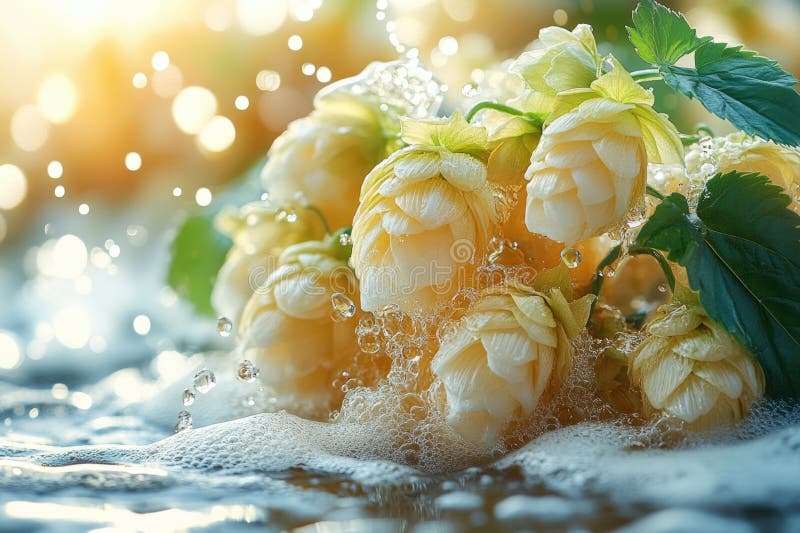Craft beer has surged in popularity over the past few decades, inviting enthusiasts to explore a remarkable diversity of flavors, aromas, and brewing techniques. While hops have traditionally reigns supreme in the craft brewing world, an intriguing trend has begun to emerge: the exploration of beer made without hops. This unconventional approach highlights alternatives that promise to create equally enchanting brews. Let’s delve into this captivating subject, analyzing the profound reasons behind this movement and the enchanting alternatives brewers are embracing.
The omnipresence of hops in beer often overshadows other components. Hops, with their unique bitterness and fragrance, serve as a cornerstone of beer flavor profiles. However, for some, the exploration of flavors beyond this beloved botanical leads to a deeper connection with brewing and a more complex appreciation for beer itself. The growing interest in hop alternatives illuminates the multifaceted possibilities within brewing, challenging preconceptions about what beer can be.
One of the primary reasons brewers are experimenting with hop alternatives is the search for distinctive flavors. Ingredients such as herbs, spices, fruits, and even flowers can contribute aromatic profiles that are as riveting as any traditional hops variety. The use of ingredients like chamomile, lavender, or coriander allows for creative expression that transcends the conventional bitterness associated with most beers. These additions often impart floral, earthy, or spicy notes that can transport a drinker through various sensory experiences.
Moreover, some brewers are inspired by the historical roots of beer. Before the widespread adoption of hops as a preservative and flavoring agent, many ancient civilizations relied on gruit—a blend of botanicals— to create their brews. A rich tapestry of herbs and spices was utilized, showcasing a vast palate of tastes that often goes unappreciated in modern crafting. Thus, many contemporary brewers are revisiting antiquated techniques to harness these versatile ingredients, attempting to weave ancestral traditions into their modern creations.
In search of alternatives to hops, certain brewers are experimenting with various roots and barks. Ingredients such as sassafras, sarsaparilla, and ginger can add layers of flavor that are both nostalgic and adventurous. The warmth of ginger or the complexity of sassafras enchants the senses while offering a unique twist to the familiar experience of beer drinking. Root flavors in beer often evoke memories and feelings, tapping into deep-seated connections tied to culture and tradition.
Fruits are another category battalions lead in the quest for hop substitutes. From the citrusy exuberance of oranges and lemons to the rich sweetness of berries, fruits can provide natural sugars that contribute to the overall flavor and aroma without the bitterness associated with hops. Moreover, fruits also invite an opportunity for innovative combinations. Imagine a beer that fuses apricots and cardamom or tart cherries intertwined with spices. Such uncommon combinations can elevate the drinking experience into a realm filled with delightful contrasts that tantalize the palate.
The fascination with hop alternatives deepens with the advent of the craft beer movement’s sustainable practices. The search for sustainably sourced ingredients speaks to a growing eco-conscious mindset among brewers and consumers alike. Utilizing herbs and spices that can be grown locally not only diminishes the carbon footprint associated with sourcing hops but also promotes biodiversity. This resurgence of local botanical ingredients aligns with the ethos of craft beer, which essentially champions creativity while paying homage to local terroir.
There is also a substantial appeal to experimenting with botanicals that engage the demographic of non-beer drinkers. The alcohol industry is witnessing a surge in plant-based and low-alcohol beverages. Craft beers that leverage herbs and spices can easily cater to this evolving landscape, constructing flavor profiles that might entice those who have previously shied away from beer. The marriage of brewing traditions with contemporary trends marks this genre of beer not merely as an alternative but as a keenly thought-out evolution of craft beverages.
However, the journey into hopless brewing does not come without challenges. Brewers must navigate a delicate balancing act to ensure flavors harmonize rather than clash. A careful approach is paramount, as the unique characteristics of herbs and spices can easily overpower subtler notes. Nonetheless, this intricate dance should encourage brewers to innovate fearlessly, blending various elements to create a coherent and pleasing experience.
As craft beer aficionados venture into this brave new world, there is an exhilarating thrill experienced with each sip of unconventional brews. Crafting beer devoid of hops invites an understanding of ingredients that invite deeper contemplation. Exploring flavors that transcend the ordinary creates an environment for discovery, where brewers venture into holistic realms of taste and aroma.
In conclusion, the exploration of hop alternatives within craft beer speaks to a broader yearning for uniqueness, creativity, and sustainability in brewing. It encourages a dialogue around what defines beer, how flavors interact, and how traditions evolve. The journey of discovering non-hoppy brews reveals a world teeming with delightful surprises, beckoning craft enthusiasts to embark on their tasting odyssey, savoring each sip of this newly awakened narrative in the craft beer revolution.
